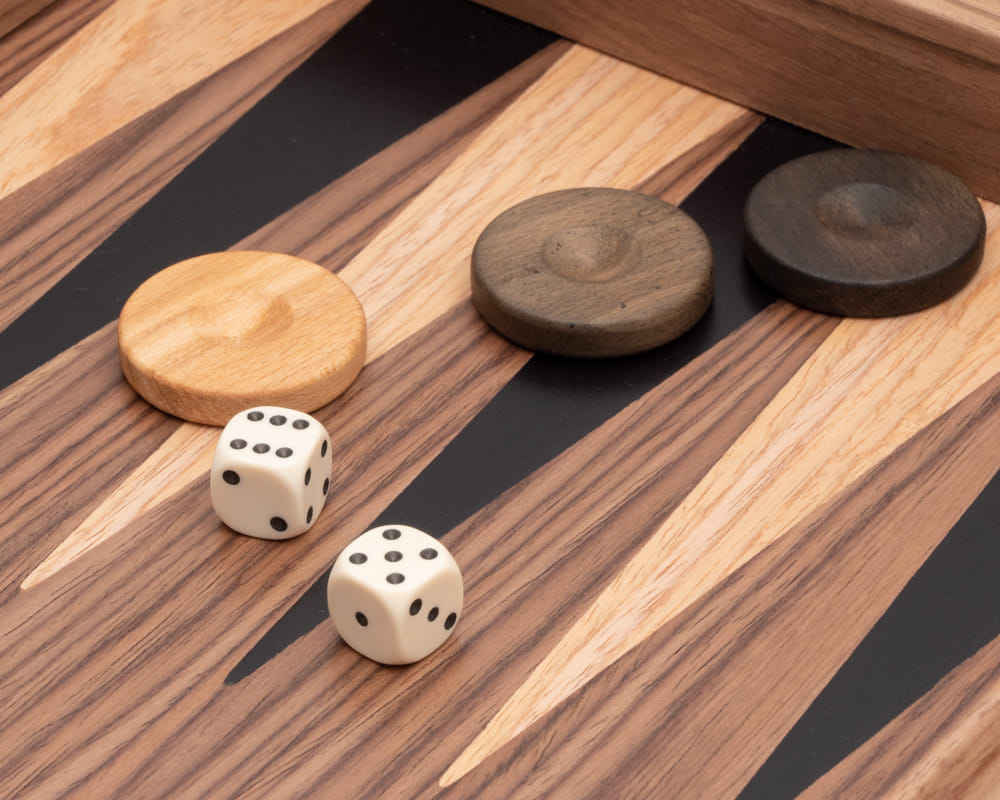Backgammon is a captivating game that intertwines strategy and chance, offering players an engaging and challenging experience. Whether you’re a beginner stepping into the world of backgammon or someone looking to refine their skills, understanding the fundamental rules and strategies is essential. In this comprehensive guide, we will walk you through the intricacies of playing backgammon, covering everything from the setup and rules to advanced strategies on how to play Backgammon, enabling you to navigate the board with confidence and finesse.
Understanding the Backgammon Board
Before delving into gameplay, let’s familiarize ourselves with the backgammon board:
- Layout: The board consists of 24 narrow triangles, known as points, arranged in four quadrants of six points each. The quadrants are the home board and the outer board, separated by a central bar.
- Home Board: Each player has their own home board, consisting of points numbered from 1 to 6, starting from the player’s nearest point.
- Outer Board: The outer board is the section closest to your opponent, mirroring your home board.
- The Bar: This central dividing line serves as a barrier between the home and outer boards, used for bearing off checkers and certain moves during the game.

Backgammon Set Up
Now, let’s set up the game:
- Placing the Board: Position the backgammon board between the players, ensuring each player’s home board is on their right side.
- Arranging the Checkers: Each player has 15 checkers of their color (usually black and white). Arrange them as follows:
- Five checkers on point 24
- Two checkers on point 13
- Three checkers on point 8
- Five checkers on point 6
- Rolling the Dice: Both players roll a single die to determine who goes first. The player with the higher number starts the game and uses the total of both dice for their first move.
- Game Commencement: Once the first player is determined, the game begins.
Backgammon Rules: How to Play
Let’s dive into the rules of backgammon:
- Rolling the Dice: Each turn begins with rolling two dice. The numbers rolled determine how many points you move your checkers.
- Moving Your Checkers: You can move your checkers forward according to the numbers on the dice. You can either move one checker the combined total or two separate checkers based on the individual die numbers.
- Hitting and Blocking: You cannot land on a point with two or more of your opponent’s checkers. If your opponent has a single checker on a point, you can land on it, ‘hitting’ it and sending it to the bar.
- Bearing Off: Once all your checkers are in your home board, you can start bearing them off by moving them off the board based on your dice roll.
- Re-entering Checkers: If your checker is hit and sent to the bar, you must roll a number that corresponds to an open point on your opponent’s home board to re-enter it into play.
- The Doubling Cube: In some games, a doubling cube is used to raise the stakes. Players can double the stakes during the game, and their opponent can accept or decline.
- Winning the Game: The first player to bear off all their checkers wins. A gammon occurs if the losing player has not borne off any checkers and the winner has borne off all their checkers, counting as two points. A backgammon occurs when the loser still has checkers in the winner’s home board or on the bar, counting as three points.

Strategies and Tips on How to play Backgammon
To improve your gameplay, consider these strategies:
- Build an Advanced Anchor: Establish anchors in your opponent’s home board to block their progress and create opportunities for hitting their checkers.
- Safety Moves: Focus on moving your back checkers closer to your home board to avoid being hit and sent to the bar.
- Slotting and Splitting: Begin the game by splitting your back checkers and creating a slot on your home board to establish an advanced anchor.
- Using the Doubling Cube Wisely: Be strategic when using the doubling cube, timing it to maximize your advantage while considering the potential risks.
- Analyzing the Board: Continuously analyze the board and adapt your strategy based on the current game situation. Flexibility and adaptability are crucial in backgammon.
Conclusion
Backgammon is a game that balances strategy and chance, offering a captivating and enriching experience for players. By mastering the rules, understanding strategic moves, and adapting to various situations, you can elevate your gameplay and enjoy the intricacies of this timeless board game. Whether you’re a casual player or aiming for mastery, the depth and nuances of backgammon promise endless hours of engaging and rewarding gameplay. Embrace the challenge, hone your skills, and immerse yourself in the captivating world of backgammon!
Don’t forget that you can play backgammon online with you friends right now! All you have to do is to click on this link.

